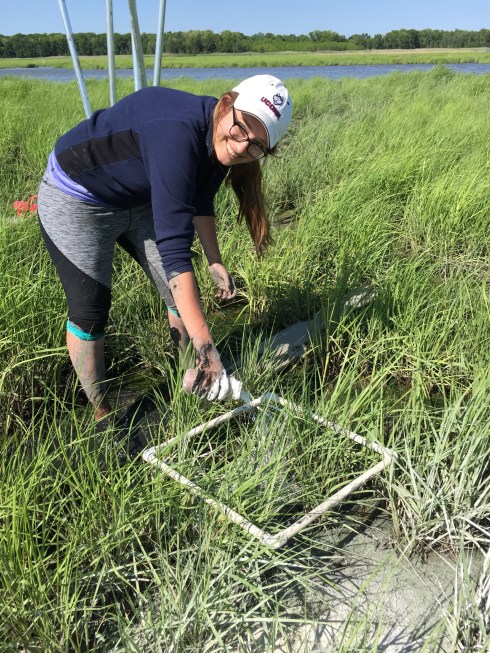
M.S. Candidate, Villanova University
Conference Travel Grant Type 2 (Society of Wetland Scientists)
Sediment and carbon dynamics in salt marshes of Plum Island Sound Estuary, MA.
“Salt marshes are located at the critical boundary between land and ocean and are therefore especially vulnerable to sea level rise (SLR). Resilience of the marsh to SLR depends on the accretion of both organic and inorganic material in the marsh. Our goal is to evaluate controls on carbon cycling to understand marsh vulnerability and potential changes to ecosystem services, such as carbon sequestration, in response to climate change. We are measuring carbon cycling and sediment deposition over the course of one year in Plum Island, Massachusetts at twelve locations throughout the marsh to model spatial and temporal patterns. CO2 fluxes are measured at each location using a chamber under four different light levels to determine rates of respiration (R) and gross primary production (GPP). We measure accretion rates using feldspar marker horizons. Above- and below-ground biomass, soil salinity, and other environmental parameters are also measured as factors controlling R and GPP. Preliminary data provided insight into the influence of multiple factors including flooding, temperature, plant type, elevation, and light on carbon cycling. Our data show that while light accelerates GPP and respiration increases with temperature, flooding suppresses both processes. Marsh elevation and plant community appear to be driving factors in marsh carbon cycling.”
